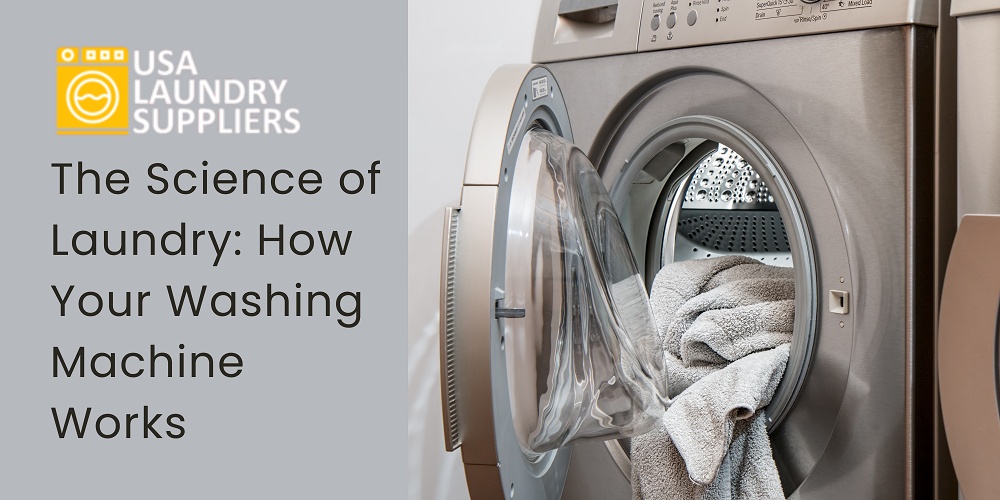The History of Washing Machines
Washing clothes by hand was the norm for centuries. The earliest washing machines were hand-cranked and consisted of a wooden drum or a metal basin. These machines were not very efficient, and the clothes had to be scrubbed by hand. In the 19th century, steam-powered washing machines were introduced, which were more efficient but still required manual labor.
The first electric washing machine was invented in 1908 by Alva J. Fisher. It was called the Thor and was the first machine to use an electric motor. However, the Thor was not very popular, as it was expensive and unreliable. It was not until the 1930s that washing machines became more widely used, with the introduction of automatic washing machines.
How Washing Machines Work
Washing machines work by combining water, detergent, and mechanical action to remove dirt and stains from clothes. The mechanical action is provided by the agitator or the drum, which rotates to create a tumbling motion. The water and detergent help to break down and dissolve the dirt and stains, while the mechanical action helps to loosen and remove them.
The washing machine consists of several components that work together to clean your clothes. These components include the motor, pump, drum, agitator, and control panel.
The Motor
The motor is the heart of the washing machine. It is responsible for powering the drum and the agitator. The motor is usually an electric motor that is controlled by the control panel. The motor rotates the drum and the agitator to create the tumbling motion that helps to clean the clothes.
The Pump
The pump is responsible for moving the water in and out of the washing machine. It is usually a small electric pump that is located at the bottom of the machine. When the washing machine is in the wash cycle, the pump circulates the water and detergent around the drum. During the rinse cycle, the pump drains the dirty water and replaces it with clean water.
The Drum
The drum is where the clothes are loaded and washed. It is usually made of stainless steel and is perforated to allow water to flow in and out. The drum rotates during the wash and rinse cycles to create the tumbling motion that helps to clean the clothes. The size of the drum varies depending on the washing machine model, with larger drums being able to wash more clothes at once.
The Agitator
The agitator is a device that is located in the center of the drum. It is responsible for creating the tumbling motion that helps to clean the clothes. The agitator is usually made of plastic or metal and has fins or paddles that help to move the clothes around the drum. Some washing machines do not have an agitator, and instead, use a drum that rotates on its own to create the tumbling motion.
The Control Panel
The control panel is the interface that allows you to control the washing machine. It is usually located at the top of the machine and consists of buttons, dials, and a display screen. The control panel allows you to select the wash cycle, water temperature, and spin speed. It also displays information such as the remaining time for the wash cycle and any error messages.
The Future of Laundry: Trends and Innovations in the Industry
The Wash Cycle
The wash cycle is the main cycle of the washing machine. It consists of several stages, including the fill stage, wash stage, rinse stage, and spin stage.
The Fill Stage
The fill stage is the first stage of the wash cycle. During this stage, the washing machine fills with water. The water level is determined by the weight of the clothes and the size of the drum. Once the correct water level is reached, the washing machine begins the wash cycle.
The Wash Stage
During the wash stage, the drum rotates and the agitator moves the clothes around the drum. Water and detergent are added to the drum to help break down and dissolve the dirt and stains. The wash cycle typically lasts between 30 minutes to an hour, depending on the selected cycle and the size of the load.
The Rinse Stage
During the rinse stage, the washing machine drains the dirty water and replaces it with clean water. This stage ensures that all of the detergent and dirt is removed from the clothes. Some washing machines have multiple rinse cycles to ensure that all of the detergent is removed.
The Spin Stage
The final stage of the wash cycle is the spin stage. During this stage, the washing machine spins the drum at a high speed to remove as much water from the clothes as possible. This reduces the drying time and helps to prevent wrinkles. The spin speed can be adjusted based on the fabric type and the amount of water that needs to be removed.
Types of Washing Machines
There are two main types of washing machines: top-loading and front-loading. Top-loading washing machines are the traditional type of washing machine, where the drum is located vertically and the lid is on top. Front-loading washing machines, on the other hand, have a door on the front and the drum is located horizontally.
Top-Loading Washing Machines
Top-loading washing machines are the most common type of washing machine. They are typically less expensive than front-loading machines and have shorter wash cycles. Top-loading machines are also easier to load and unload, as you do not have to bend down to reach the drum.
However, top-loading washing machines are less energy-efficient than front-loading machines, as they use more water and electricity. They also have a smaller drum capacity, which means that you cannot wash as many clothes at once.
Front-Loading Washing Machines
Front-loading washing machines are more expensive than top-loading machines, but they are more energy-efficient and can wash larger loads. Front-loading machines use less water and electricity, as the drum rotates horizontally and the clothes are washed using gravity.
Front-loading machines are also gentler on clothes, as there is no agitator to snag delicate fabrics. However, front-loading machines are more difficult to load and unload, as you have to bend down to reach the drum.
Conclusion
Washing machines have come a long way since their invention in the early 20th century. They have evolved from hand-cranked machines to sophisticated appliances that use electricity and advanced technology. The science of laundry is complex, with a combination of water, detergent, and mechanical action working together to remove dirt and stains from clothes.
Understanding how your washing machine works can help you choose the right machine for your needs and ensure that you get the most out of your appliance. Whether you prefer a top-loading or front-loading washing machine, both types have their advantages and disadvantages. Regardless of the type of washing machine you choose, remember to follow the manufacturer’s instructions and care for your machine properly to ensure that it lasts for years to come.














